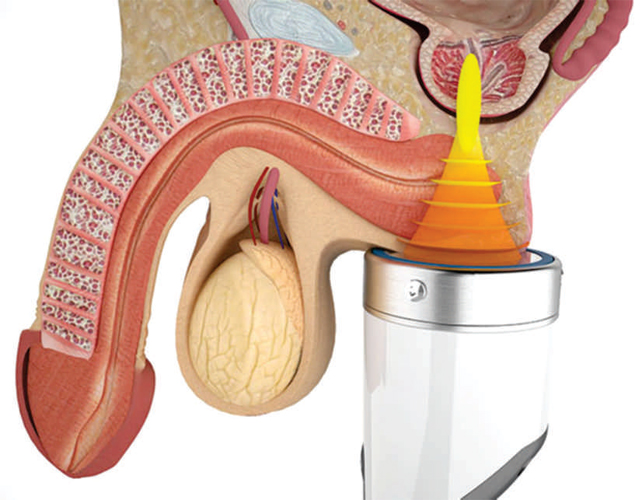
Causes of Chronic Pelvic Pain Syndrome (CPPS)
Chronic Pelvic Pain Syndrome or CPPS, is a perplexing medical condition which is characterized by persistent pain and discomfort in the pelvic floor region. Despite its prevalence, the exact causes of CPPS remain poorly understood. This article aims to explore the multifactorial nature of CPPS and examine the potential underlying causes that contribute to the development and perpetuation of this condition. This article also aims to shed some light on the potential treatment options of CPPS.
Inflammatory Factors:
One potential cause of CPPS is inflammation within the pelvic region. Inflammatory processes, either due to infection or non-infectious causes, may trigger or perpetuate the symptoms. Bacterial infections of the prostate, although less common, can result in chronic inflammation and subsequent pain. However, in many cases, no specific pathogenic organism can be identified, leading to the categorization of CPPS as non-bacterial. Non-infectious factors, such as autoimmune responses, pelvic muscle inflammation, and neurogenic inflammation, have also been implicated in CPPS development.
Pelvic Floor Dysfunction:
The dysfunction of the pelvic floor muscles has been identified as a potential cause of chronic pelvic pain syndrome. These muscles play a crucial role in supporting the pelvic organs and maintaining proper bladder and bowel function. Dysfunction or abnormalities in the pelvic floor muscles can lead to increased muscle tension (hypertonicity) or weakened muscles (hypotonicity), contributing to pain and pelvic floor dysfunction syndromes. Pelvic floor dysfunction can be triggered by factors such as injury, trauma, prolonged sitting, stress, and muscular imbalances, which may contribute to the development and perpetuation of CPPS symptoms.
Neurological Factors:
The involvement of the nervous system in CPPS is another area of ongoing research. Alterations in the central and peripheral nervous systems have been proposed as potential causes of CPPS. Nerve entrapment, neuropathic pain, and increased sensitivity of nerve endings in the pelvic region may contribute to the experience of chronic pain. In some cases, previous pelvic surgeries or trauma can damage nerves, leading to the development of CPPS symptoms. Moreover, dysregulation of pain processing and perception in the central nervous system may play a role in amplifying pain signals, resulting in chronic pain and discomfort.
Psychological Factors:
Psychological factors, such as stress, anxiety, and depression, have been found to influence the development and exacerbation of CPPS symptoms. While psychological factors may not directly cause CPPS, they can significantly impact the perception and experience of pain. Stress and emotional distress can lead to muscle tension, altered pain processing, and exacerbation of pain symptoms. Additionally, the chronic nature of CPPS and the impact on daily life can contribute to the development of psychological symptoms, creating a complex interplay between physical and psychological factors.
Treatments:
Men’s chronic pelvic pain syndrome treatment mainly focuses on symptom management and quality of life. Although there is no cure for CPPS, numerous therapy approaches may be beneficial in lowering pain and suffering. These could entail the following:
Medication for pain: Over-the-counter pain medications, such as acetaminophen or ibuprofen, may assist to alleviate mild to severe CPPS discomfort.
Alpha-blockers: These drugs loosen the muscles of the prostate and bladder neck, increasing urine flow and decreasing pain.
Muscle relaxants: These drugs can assist to relieve pelvic floor muscular tension, which may contribute to CPPS.
Physical therapy: Physical therapy for the pelvic floor can help relieve muscular tension and improve bladder and bowel function. Your therapist may teach you exercises to strengthen and relax the pelvic floor muscles, as well as posture and breathing strategies.
Behavioural therapy: Cognitive-behavioural therapy (CBT) can help reduce stress and anxiety, both of which can contribute to CPPS. Your therapist may teach you stress and anxiety management skills, as well as pain management approaches.
Prostate massage: Regular prostate massage may aid some men with CPPS by increasing blood flow and decreasing inflammation in the prostate gland.
Acupuncture: Acupuncture may assist some men with CPPS decrease discomfort and improve bladder and bowel function.
Shockwave therapy: Shockwave therapy has been demonstrated to be an effective treatment for non-bacterial chronic pelvic pain syndrome, with many patients reporting significant improvement in their symptoms. Shockwave treatment for non-bacterial CPPS lowers pain and inflammation in the afflicted area by increasing blood flow and healing. Shockwave therapy has also been demonstrated to increase muscular performance and reduce muscle tension, both of which can help with non-bacterial CPPS symptoms. One clinic that has made a name for itself in the medical community by providing excellent shockwave therapy for the treatment of non-bacterial CPPS is Shockwave Clinics Ltd. It is a UK-based specialized men’s health clinic and is widely known as the best shockwave clinic in the entire Europe.
Conclusion:
Inflammatory, muscular, neurological and psychological variables are all involved in the development of chronic pelvic pain syndrome (CPPS), which has multiple and complicated aetiology. The precise interaction of these elements is still being researched. Understanding the underlying causes of CPPS is critical for increasing diagnostic accuracy, identifying specific treatments and improving the quality of life for those living with this debilitating disorder. Thankfully, treatment options for CPPS have developed a lot in recent years. With the help of modern treatment options, it’s possible to effectively reduce the symptoms and pain that are caused by this disease.







